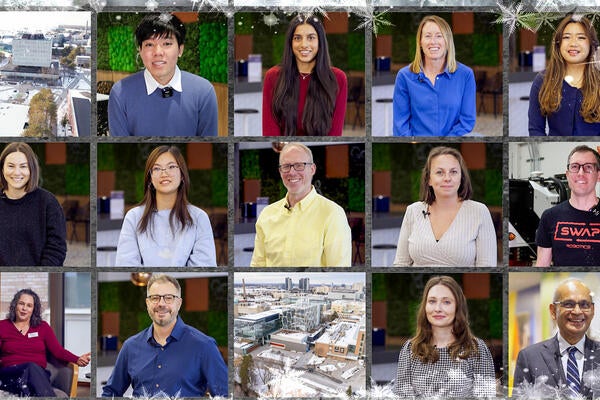
Waterloo Engineering Dean reflects on Montreal Massacre
University of Waterloo marks the 25th anniversary of the Montreal tragedy with a vigil and ceremony

University of Waterloo marks the 25th anniversary of the Montreal tragedy with a vigil and ceremony
By Beth Gallagher Marketing and Strategic CommunicationsPearl Sullivan was a young engineering student, just completing her PhD at the University of British Columbia, when she heard that 14 women had been gunned down at an engineering school in Montreal on December 6, 1989.
Twenty-five years later, Sullivan is now leading the largest engineering school in Canada.
As the dean of Waterloo Engineering, Sullivan witnesses daily the passion and potential of young women, which makes the loss of life in Montreal especially poignant.
“I think of the pain of the 14 families and am always overwhelmed with sadness at this time,” said Sullivan, who will speak at a campus memorial to mark the 25th anniversary of the Montreal Massacre on Friday. “The planned nature of the crime was so shocking, the deliberate intention to separate the men from the women.”

The campus event is part of a National Day of Remembrance and Action on Violence Against Women. Diana Parry, associate professor in Applied Health Sciences, and Special Advisor to the President on Women’s and Gender Issues, will also speak.
“It’s important to mark the 25th anniversary of the Montreal Massacre because it’s a reminder of what can happen if a certain group is perceived to be a threat. The reaction to the threat in this case was extreme but we should be vigilant about how we portray any group, whether it is gender or ethnicity or any other attribute, ” said Sullivan.
The University of Waterloo is working to encourage more young women to study engineering and this year 27 per cent of first-year students studying engineering at Waterloo are women - the largest number ever. It’s a significant increase from a decade ago when only about 15 per cent of first-year students were female.
Sullivan attributes the increase to the sustained and extensive outreach activities led by Professor Mary Wells, associate dean outreach for Waterloo Engineering, who will also speak at the campus memorial.
"One of the positive outcomes of our outreach work is to counter a common preconceived notion that engineering is a male profession," said Sullivan. "We have to open the door to girls when they are young even before they reach high school, so they can be shown what engineers do. Engineers envision, design and implement solutions that impact all of our lives.”
Sullivan first began studying engineering in a small class at the Technical University of Nova Scotia where she was the only female. She had decided to study engineering while still in high school in Malaysia after reading an article about engineers working in developing countries.
“I started out not knowing what an engineer looked like. The article never said engineers were male or female. It was about a group of people working to improve things for a community. It had a profound effect on what I chose to study,” said Sullivan. “I said to myself at the time, 'This is what I want to do with my life.' "
“Fast forward three decades and I am delighted that so many women feel the same way about engineering today. Now they have a wide range of programs to choose from," said Sullivan. "The opportunities for them to find their own paths are huge. We have a come long way in the past 25 years, and that is a tribute to so many men and women before us who took big steps to open doors.”

Read more
Here are the people and events behind some of this year’s most compelling Waterloo stories

Read more
A winter holiday message from President Vivek Goel

Read more
Shop Canadian this holiday season with festive porch plants, fashion-forward apparel, craft spirits and more from Waterloo entrepreneurs
The University of Waterloo acknowledges that much of our work takes place on the traditional territory of the Neutral, Anishinaabeg, and Haudenosaunee peoples. Our main campus is situated on the Haldimand Tract, the land granted to the Six Nations that includes six miles on each side of the Grand River. Our active work toward reconciliation takes place across our campuses through research, learning, teaching, and community building, and is co-ordinated within the Office of Indigenous Relations.